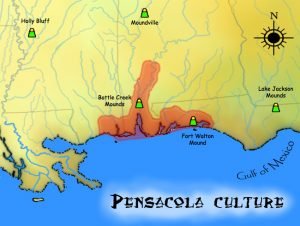Yamasee Indians
Yamasee Tribe. Meaning unknown, though it has been interpreted by Muskogee yamasi, “gentle.” The form given in some early writings, Yamiscaron, may have been derived from a Siouan dialect or from Timucua, as there is no r in any of the Muskhogean tongues. Yamasee Connections. The Yamasee town and chief names indicate plainly that they spoke a Muskhogean dialect and tradition affirms that it was connected most closely with Hitchiti, a contention which may be considered probable. Yamasee Location. The earliest references that we have place the Yamasee on Ocmulgee River not far above its junction with the Oconee. They … Read more

